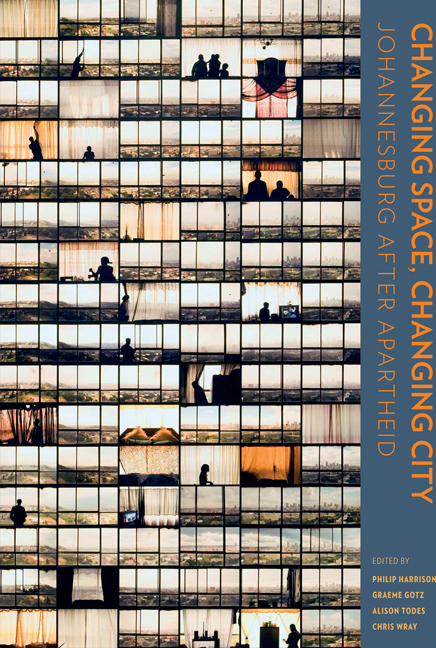Book contents
- Frontmatter
- Contents
- Preface
- Cartography
- 1 Materialities, subjectivities and spatial transformation in Johannesburg
- Section A The macro trends
- 2 The ‘thin oil of urbanisation’? Spatial change in Johannesburg and the Gauteng city-region
- 3 Poverty and inequality in the Gauteng city-region
- 4 The impact of policy and strategic spatial planning
- 5 Tracking changes in the urban built environment: An emerging perspective from the City of Johannesburg
- 6 Johannesburg's urban space economy
- 7 Changes in the natural landscape
- 8 Informal settlements
- 9 Public housing in Johannesburg
- 10 Transport in the shaping of space
- 11 Gated communities and spatial transformation in Greater Johannesburg
- Section B Area-based transformations
- Section C Spatial identities
- Contributors
- Photographic credits
- Acronyms
- List of plates
- List of figures
- List of tables
- Index
3 - Poverty and inequality in the Gauteng city-region
from Section A - The macro trends
Published online by Cambridge University Press: 20 April 2018
- Frontmatter
- Contents
- Preface
- Cartography
- 1 Materialities, subjectivities and spatial transformation in Johannesburg
- Section A The macro trends
- 2 The ‘thin oil of urbanisation’? Spatial change in Johannesburg and the Gauteng city-region
- 3 Poverty and inequality in the Gauteng city-region
- 4 The impact of policy and strategic spatial planning
- 5 Tracking changes in the urban built environment: An emerging perspective from the City of Johannesburg
- 6 Johannesburg's urban space economy
- 7 Changes in the natural landscape
- 8 Informal settlements
- 9 Public housing in Johannesburg
- 10 Transport in the shaping of space
- 11 Gated communities and spatial transformation in Greater Johannesburg
- Section B Area-based transformations
- Section C Spatial identities
- Contributors
- Photographic credits
- Acronyms
- List of plates
- List of figures
- List of tables
- Index
Summary
Being fast and not very spatial doesn't make you any better in spatial kinds of things; you probably just get the wrong answer more quickly.
– Howard GardnerThe Gauteng city-region covers the whole of Gauteng province as well as outlying economic centres and apartheid-induced displaced urbanisation in at least four neighbouring provinces. Johannesburg is the beating heart of the economic powerhouse that is the city-region, which generates over 40 per cent of national GDP. In this chapter I argue that Johannesburg needs to be understood within its broader socio-economic context, that of the Gauteng city-region. A focus on poverty and inequality shows that Johannesburg fares well when compared to other parts of the city-region, but also highlights the inequalities within the city itself, and their relative severity. Spatially understood, relative deprivation may be a better measure for understanding need, provision and protest (the context in which much writing and activism around poverty is located) in Johannesburg than national measures of absolute poverty, given the relative affluence of the Gauteng city-region and the extent of basic needs that have been met since 1994. I then briefly analyse the way in which the City of Johannesburg has attempted to use a multiple deprivation index to allow spatial targeting of ‘the poor’, and suggest that if this were combined with a more nuanced approach that includes value and attitude data about people's ‘headspace’ (unattainable from Census data, for obvious reasons), the targeting may be more effective. Finally, I argue that post-apartheid Johannesburg – like the city-region it sits in – is far from static. Class formation, population movement, spatial growth and shrinkage are occurring apace (though the pace is, predictably, politically contested). Empty spaces can be filled with shacks seemingly overnight, as Gauteng's population continues to grow at 2.6 per cent per annum in a country where birth rates are dropping; but can empty just as fast (GCRO 2011a). However, all these processes – urbanisation, class formation and so on – are dogged by the persistence of apartheid's racially segregated townships, post-apartheid's (equally racially segregated) inner-city slums, and new (similarly profiled) informal settlements that have emerged and spread post-apartheid. The new geography has done little to uproot apartheid geography.
- Type
- Chapter
- Information
- Changing Space, Changing CityJohannesburg after apartheid, pp. 63 - 82Publisher: Wits University PressPrint publication year: 2014



